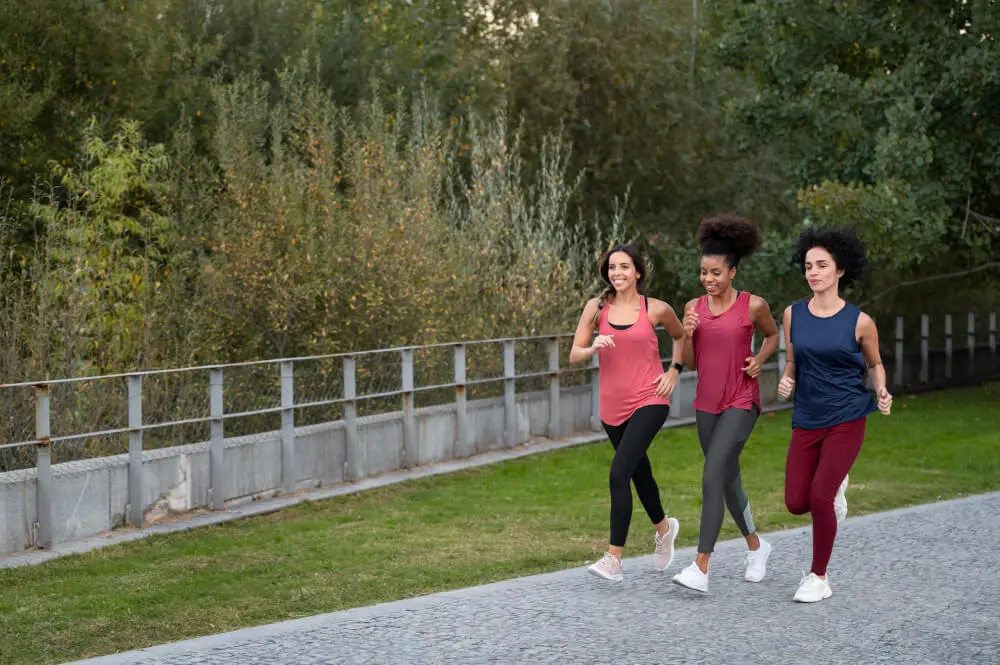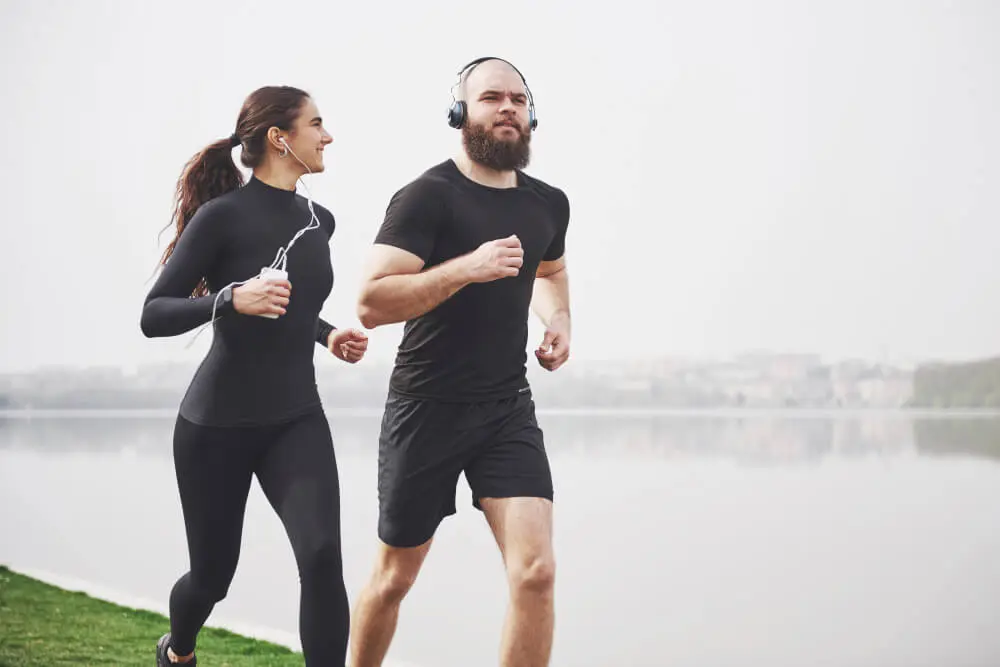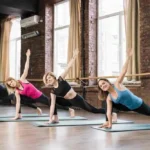Table of Contents
Introduction: Obsession with Six-Pack ABS
The obsession with six-pack abs has swept the fitness world, simplifying workouts and dietary habits into a single-minded pursuit of a chiseled midsection. Browse through social media, and it’s full of pictures of perfectly defined abs, giving the impression that this is the ultimate seal of fitness. What is the price we are paying for this? Are we sacrificing real health for an unreachable aesthetic?
Why 6-Pack Abs Became the Symbol of Fitness Success
The six-pack abs have grown to be the gold standard of fitness. They are visible, measurable, and, through the cultural push, seen as the ultimate evidence of strength. But does an etched core really signal fitness, or is it simply an image easily sold?
The Social Media Illusion: Chiseled Bodies vs. Reality
Those six-pack abs you see online? Most of them are a result of crazy diets, selective lighting, and sure, even photo editing. Behind all these perfect pictures lie stories of overtraining, burnout, and a diet culture making unhealthy behaviors way too glamorized. Behind the perfect picture often lies a struggle for sustainability.
How Society’s Focus on Abs Distracts From Real Fitness
This tunnel vision on abs pulls us away from the real pillars of fitness: strength, mobility, endurance, and mental wellbeing. Our goal, shaped purely by looks, is deviating our attention from what truly makes us fit—function, not form.

The Myth of Six-Pack Abs
Unrealistic Standards: What It Really Takes to Achieve Visible Abs
Having visible abs calls for an almost unattainably low percentage of body fat, one so low that it’s neither healthy nor maintainable for most people. The bar is set high, but what happens when we realize the cost of staying there?
Genetics and Body Type: Why Not Everyone Can Get a Six-Pack Abs
Genetics plays a big role in whether we can have those enviable six-pack abs. Some body types, no matter how rigorous the training, simply aren’t built to show visible abs. Individual differences far outweigh generic fitness advice.
Is Health Being Sacrificed for Aesthetics? The Hidden Costs of Ab Pursuit
In doing so, during this process of acquiring six-pack abs, much more is lost than a lot of people actually think. Extreme dieting can strip your body of the necessary nutrients and minerals that it needs, while the preoccupation with workouts triggers injury and exhaustion, which in turn will rob you of your mental peace and health in general.
The Problem with Hyper-Focusing on Abs
- Ignoring Overall Strength: Why Your Core is More Than Just Abs
The core is not just about superficial abs but rather a powerhouse of the body. Hyper-focusing on visible abs disregards key muscle groups like the obliques and transverse abdominis, important for real strength and stability.
- The Risk of Injury: How Obsessing Over Abs Can Harm Your Body
Many times, the obsession with abs results in training imbalances, weakening other more important muscle groups. Because of this fascination with repetitive ab workouts, a number of muscles are overloaded, which in turn nudges one’s body toward injury.
- Short-Term Gains, Long-Term Loss: The Unsustainable Nature of Six-Pack Abs Training
This pursuit is one that is often not sustainable. Once you step away from the grueling routines or restrict your diet less, those abs fade. The sense of failure that ensues isn’t because you’ve let yourself go–it’s because this was never a sustainable goal.
Aesthetic vs. Functional Fitness
Redefining Fitness: Why Form Should Come After Function
Fitness has nothing to do with your looks; it is totally related to what your body is capable of doing. Functional fitness focuses on practical strength, flexibility, endurance, and health-better performance of your body in daily activities.
Why You Should Focus on What Your Body Can Do, Not How It Looks
What your body can do means so much more than what your body looks like. Whether someone is into weight-lifting, running over long distances, or just being able to move without pain, functionality certainly pays dividends in the long run, while results achieved merely out of vanity give way to short-term satisfaction alone.
Functional Fitness: Training for Real Life, Not Vanity
Functional fitness develops your body through movement for daily life, assuring your resilience and health for years to come. It’s not about fast aesthetics; it’s about forging a body ready for whatever life throws at you.
Practical True Core Strength
What’s the core, really? It’s so much more than abs! The core encompasses the stabilizers of the spine, hips, and glutes-much greater in comparison to just abs. So, if you train abs alone, then huge portions of your core are left underdeveloped, which weakens posture and stability.
Building a Strong Core: The Muscles You’ve Been Ignoring
The truth is, if you want to develop real core strength, then you must incorporate training for muscles like the erector spinae and the multifidus, not just the rectus abdominis. These are postural muscles, balancing and overall body mechanical muscles.
Functional Core Workouts: Exercises That Build Strength, Not Just Definition
Ditch the mindless crunches for planks, Russian twists, and kettlebell swings. These functional exercises create a solid core that will help you better perform daily tasks-not just expose rippling abs.
The Risks of Crash Dieting for six-pack Abs
The Caloric Deficit Trap: Why Starving Yourself Won’t Lead to Sustainable Results
Crash diets that severely cut calories may give you abs in the short term but leave your body devoid of energy, crippling your muscles, which slows metabolism. And what is the end result of all these? Unsustainable and unhealthy results.
Losing Nutrients: The Side Effects of Extreme Ab Diets
Revealing six-pack abs by calorie-cutting or removing whole food groups can set you up for long-term health problems. You may want to give up hair loss, brittle nails, mood swings, and an inoperable immune system for the look of being shredded.
The Yo-Yo Effect: Why Crash Diets for Abs Often Mean Gaining Weight
The body, after going on a crash diet, tends to regain the lost fat at an even faster rate. This is called the yo-yo effect; it’s a no-end vicious circle because deprivation breeds rebound weight gain, and thus all your good work gets canceled out.
Changing Your Mindset: Real Fitness Goals That Really Matter
Strength and Performance: The Fitness Goals You Should Be Focusing On
Ditch the six-pack abs chase-focus on strength, endurance, and agility. These are the metrics that will improve how you will actually feel, how you will move, and how well your body performs for years to come.
Mobility and Flexibility: Why They Matter More Than You Think
Mobility and flexibility are the unsung heroes of fitness. They prevent injury, improve posture, and ensure that you move freely and painlessly throughout your life for a greater range of motion and comfort.
Mental Health Gains: How Fitness Should Be About Feeling Good, Not Looking Good
True fitness nurtures your mind as well as your body. Exercise dissipates stress, nurtures confidence, and hardens your emotions against life’s ups and downs. It’s a question of feeling powerful and potent rather than merely appearing so.

The Benefits of Wholistic Fitness
Balanced Fitness: Building Strength, Endurance, and Flexibility Together
A well-rounded fitness regime further strengthens muscles, builds endurance, enhances flexibility, and keeps the mind healthy. Such a holistic approach turns the body into an instrument that can handle anything thrown its way.
Why Cardio, Strength, and Mobility All Matter to True Fitness
True fitness is multidimensional: it involves cardiovascular health, muscular strength, and mobility-all must go together. Any one of these neglected can create imbalances that might be highly detrimental to overall health and longevity.
Fitness as Lifestyle: Why It’s More About Consistency Than Aesthetic by Jacqueline Clark Fitness is not a quick fix; it’s a long-term commitment built on consistency. When you approach fitness as a lifestyle, it becomes more about sustaining your health and energy than achieving a particular look.
How to Create a Balanced Workout Routine
Moving Away from the Ab-Centric Routine: Full-Body Workout for Better Outcomes
Finally, it’s time to break free from that stubborn belief that six-pack abs somehow define fitness. Little more explains this infatuation with abdominal definition than how it eventually translates into unbalanced workout routines at the expense of other body parts. Full-body workouts involve several muscle groups in activity for better balance in fitness. Working the entire body incorporates strength, stamina, and health beyond aesthetics. Squats, deadlifts, and push-ups give you so much more bang for your buck when developing functional strength that’s transferable in daily life.
The Power of Compound Movements: Exercises That Work Your Entire Body
Compound movements are those like squats, lunges, and deadlifts-all involving the use or engagement of multiple large muscle groups at a time. These exercises simultaneously engage the core, upper, and lower body, and for that reason, they are very efficient. Compound exercises build muscle, but they also enhance coordination, balance, and flexibility. They take more energy, burn more calories, and increase cardiovascular fitness, unlike isolated movements. The ripple effect of such movement is undeniable: it builds a stronger, resilient body that will perform better in life’s all aspects.
Flexibility and Mobility Training Added for Overall Health
Flexibility and mobility are often left behind in the training process, which many people consider less important than strength training or cardio. But they are also crucial in maintaining a body that moves freely and fluidly. In addition to regular stretching, yoga, and dynamic mobility training will ensure healthy joints and prevent injury. These exercises, besides being great injury preventers, will enhance overall performance from the workout. A flexible body can get back quickly, adapt to various forms of exercise, and last longer in physical activity. Incorporate mobility work so you know you are not only strong but agile and adaptable.
Free Yourself from the Six-Pack abs Trap
Let Go of Unrealistic Fitness Expectation
A six-pack abs search leads to frustration, burnout, and disappointment. Visible abs are not a great indicator of health; they are mainly connected with genetics and body type, which again is influenced by diet. The unrealistic goal can make your whole fitness journey blindsided to the real purpose-health and strength. Now is the time to create more meaningful expectations that mirror your unique body, abilities, and goals. Let go of the six-pack abs fantasy and come to a holistic, attainable approach towards fitness.
Tracking Progress Beyond Aesthetics: How to Measure Real Fitness Success
True fitness success isn’t about the number of abs you can count in the mirror. It’s about how you feel, how strong you’ve become, and how capable your body is in day-to-day life. Measuring your fitness progress against strength gains, improved stamina, and flexibility is a better judge of where you’re really at. Can you lift heavier? Run faster? Move without discomfort? These are the metrics that count. Monitoring such types of progress allows you to celebrate real successes, not superficial ones.
Setting Meaningful Fitness Goals: Strength, Stamina, and Mental Resilience
Instead of setting appearance-related goals, try setting some related to building and strengthening your body, stamina, and mind. So, want to move up in weights? Be able to run a little further? Maybe just simply make it through the workout without calling it quits? Fitness goals in which one is physically and mentally challenged bring about growth and resilience-a sense of accomplishment well beyond appearance. The more strength and stamina you have, the better your body can function, and mental resilience will get you through those moments when you think you just can’t do it.
Mental Health and Body Image
The Psychological Toll of Chasing a 6-Pack Abs
This begets unhealthy behaviors in the singular pursuit of a six-pack abs, including obsessive dieting, overtraining, and body dysmorphia. And all too often, the psychological toll exacted by trying to meet an unattainable standard undermines the health-enhancing mental benefits of exercise. It makes you feel defeated rather than empowered. Insecure, it sucks the fun out of physical activity and turns it into a punishing ritual rather than a source of wellness.
Why Fitness Should Boost and Not Harm Your Self-Esteem
Fitness is supposed to be a confidence builder, not a destroyer. The moment the focus shifts from aesthetics to performance, the impact on your self-image starts to improve. You can consider your body as a powerful tool that does very remarkable things. This shift in perception allows one to foster a positive relationship with oneself based on gratitude for what the body can do, not frustration over how it looks. Fitness should be a journey toward self-empowerment, not toward self-criticism.
Shifting Focus: How to Build Confidence Through Fitness, Not Appearance
When you focus on what your body can do rather than how it looks, the confidence will follow. Whether that’s being strong enough to lift heavier, having endurance to run longer, or being flexible enough to move pain-free, these are milestones that truly matter. By valuing performance over perfection, you build lasting self-assurance from within rather than leaning on transient physical changes.
Redefining Fitness for Yourself
Personalization of Your Fitness Journey: Forget the Six-Pack Abs Standard
Fitness isn’t one-size-fits-all, and it’s time to stop measuring yourself against a standard that may not even apply to you. Your body is unique, and so is your journey into fitness. Tailor your goals to suit your strengths, weaknesses, and interests. Whatever it is-run, lift, or practice yoga-the right kind of fitness is what your body needs, not what social media dictates it should look like.
Setting Your Fitness Goals Based on Your Body, Not the Idealized Image
The fitness goals you aim at should be in line with your body type, way of living, and health. Let go of what looks like a perfect, idealistic fitness version, but work out for something that keeps you strong, energetic, and confident. Your goals should reflect your unique capabilities and needs-not some unattainable benchmark. Whether it is gaining more flexibility, building endurance, or even increasing strength, it is about you.
Celebrating Progress: Strength Gains Over Physical Changes
Fitness is a journey and not an ideal point. Celebrate everything, even if the step seems or feels small. Whether it is that you can lift heavier weights now, run faster, or no longer get breathless during your workouts, those are the wins that should count. After all, successful recognition of strength increases and improvements in endurance, rather than mere changes in physical appearance, encourages a healthier mindset that assures motivation throughout the course of a fitness journey.
Long-Term Fitness Habits
Sustainability over Speed: How to Create a Routine You Can Maintain
It’s about sustainability, not speed. Quick fixes and extreme programs inevitably lead to burnout and injury, making you worse off than when you started. The best development of a routine is one that you can consistently follow-one that fits into your life. You’ll get far more out of steady progress that’s manageable than out of crash diets or punishing workout regimens.
Consistency Key: Why Long-Term Progress Beats Quick Fixes
Success in the field of fitness is all about longevity. So, instead of quick gains, nurture the habit that will last. Consistent, moderate exercise and balanced nutrition will always be far better than the quick results from radical diets or over-the-top workouts. Fitness is definitely a marathon rather than a sprint. Yes, progress might be slow, but it’s steady, and that’s what yields lasting change.
The Power of Patience: Embracing the Slow, Steady Path to Fitness
Patience is a virtue when it comes to fitness. Though the path of slow and steady might lack the gratification that an immediate fix does, the results can be very long-lasting. Learn to love the journey knowing that with each workout, with every healthy meal, and with each rest day taken, you are one step closer to those long-term goals you’ve set. True fitness is a process; it takes time, dedication, and perseverance.
Nutrition: Fueling for Fitness, Not Abs
Eating for Performance: How to Properly Fuel Your Body
Nutrition is fuel. It’s all about shifting the paradigm away from dieting to eating-for performance. What you need to perform optimally is energy, nutrients, and hydration. Don’t starve yourself to reveal your six-pack abs; instead, feed them with balanced meals full of proteins, healthy fats, and complex carbohydrates. The right foods before and after your workouts will improve performance.
Balanced Diet vs. Restrictive Diet: Why You Really Don’t Need to Cut Out Everything
A well-rounded diet is the key to sustainable fitness. Diets that cut out whole categories of food or drastically reduce calorific intake might make for temporary success, but they will surely lead to nutritional deficiencies, fatigue, and loss of muscle mass. Instead, focus on a well-rounded diet complete with a variety of nutrient-dense foods. It is not about the deprivation; it is about finding balance and long-term health.
Hydration: The Key to Building Functional Fitness
Hydration tends to be the most overlooked method of fitness, yet it is greatly significant. Water enables the facilitation of muscle function, body temperature regulation, and recovery. When dehydration occurs, your performance will deteriorate and your progress will be slower. By giving importance to hydration in your fitness regimen-particularly after arduous exercises-one will attain improvements in stamina, recovery, and overall health.

Rest and Recovery: The Role in True Fitness
Why Overtraining Won’t Get You Six-Pack Abs (And What It Does to Your Body)
Overtraining for aesthetic concerns can do more harm than good. Never mind the damage it can cause to your muscles, which need some time to recover and grow. Constant overworking without rest will be leading you to fatigue, injury, or burnout. Overtraining can wreak havoc with your psyche too, making what should be an empowering journey into a punishing cycle of exhaustion.
Rest Days: Importance to Muscle Growth and Recovery
Rest is when the magic happens. Your muscles need time to repair and grow after being taken to their limits in a tough workout. Rest days are not a sign of weakness but rather a very important part of the fitness process. Not observing rest leads to injury, overuse, and hindering progress. You make sure by giving your body all the time it needs to recover that you come back even stronger, ready for your subsequent workout.
Active Recovery: Stretching, Yoga, and Mobility for Long-Term Fitness
That does not imply lying on the couch; active recovery is about light movement to facilitate recovery and increase flexibility. Stretching, yoga, or light mobility work included in your rest days will enhance blood flow, reduce muscle stiffness, and improve your fitness over a longer period. This helps someone be active without overdoing it with too much stress on the muscles; hence, consistency in the training is maintained.
Listening to Your Body
How to Know Your Body Needs a Rest Day
Your body speaks to you 24/7, and it’s all about learning to understand. It might be tired, sore, or just unmotivated; your body does the begging for rest. But most work their way through these signs of strain just to prove a point, and that leads to overtraining and injury. Rest is not failing; it’s one component of progress.
Knowing the Difference: Pain vs. Progress in Your Workouts
There is a fine line between pushing yourself and overdoing it. Where discomfort may be a part of growth, pain is a warning bell of an impending problem. The difference between these two needs to be recognized. After all, fighting discomfort builds resilience, while ignoring pain leads to injuries. Pay attention to your body’s signals so that you know you’re making progress safely and effectively.
Adjusting Your Routine for the Changing Needs of Your Body
Your routine should evolve in the same way your fitness does. What worked for you a year ago isn’t going to work today. Listening to your body lets you understand when it’s time for you to change your program and meet the new needs. That means increasing the intensity, adding different movements, or scaling back for recovery-the key to long-term success.

Real-Life Fitness Success Stories
Stories from Athletes Who Gave Up the Six-Pack Abs Pursuit
Athletes from all over the globe have given up on their aesthetic goals, taken up performance instead, and seen phenomenal results. Many have shared their story of giving up on the six-pack abs chase and moving on to functional fitness. More often than not, these individuals report feeling much stronger and more energized, with an equally healthy mental state. They’ve managed to find that the invisible nature of the abs does not directly link to muscle strength or success.
How Functional Fitness Changed Their Lives
Functional fitness is not about how a person performs in the gym but rather how he or she moves and operates in daily life. Most of the testaments to this kind of regime come from athletes who developed the particular agility, stamina, and strength one needed to live an active life without pain. Not only does functional fitness build bodies that are pleasing to the eye, but also bodies ready for anything.
Inspirational stories of fitness journeys that have overcome the urge to comply with aesthetic pressures in favor of gaining strength and health. Those are the fitness journeys showing in strength the power of prioritizing function over form, even in the joy coming from focusing on what your body can do. Their stories serve to remind one that true fitness is about ability, not appearance.
Practical Advice on Shifting the Focus of Your Workout Routine
How to Stop Obsessing Over Abs and Start Loving Your Body’s Capabilities
It starts in the head: instead of training your six-pack abs, start celebrating all that your body can do—whether that be running a mile, lifting a heavy weight, or just not having to be in pain when moving around. Celebrate these small victories, and you’ll find yourself falling in love with the process of being fit-not just the end result.
Building a Routine That Prioritizes Overall Strength and Well-Being
Design a training focused on general health and strength rather than esthetics-what that means is setting up goals for life. Ensure your routine is balanced in regard to strength training, cardio, flexibility work, and recovery. Be performance-driven in each of these areas, rather than perfectionistic in one particular area. That holistic approach will keep you inspired and committed to the journey.
Tools to Help You Track Real Progress-Strength, Endurance, and Flexibility
Tracking your progress goes beyond the scale or a mirror. Utilize strength, endurance, and flexibility measuring tools. Apps, journals, or fitness trackers can be used to log those improvements, so you have tangible evidence of your progress. In fact, seeing your gains in endurance or flexibility may be as satisfying-if not more so-than finding that new muscle in the mirror.

The Importance of Enjoying Your Workouts
Fun over Fixation: Why You Should Enjoy Fitness, Not Endure It
Exercise should be enjoyable. You will be less likely to continue with workouts if you are not enjoying them. Get rid of those painful routines you hate and find some things that you enjoy. Fun needs to be the core of your fitness, be it dancing, hiking, or playing some sort of sport. When you actually enjoy fitness, it stops being a chore and becomes something you look forward to doing.
How to Find Fitness Activities You Love-That Aren’t Ab Workouts!
The key to long-term fitness success lies in activities that you genuinely enjoy. Try new things: cycling, swimming, rock climbing, or even martial arts. The more variety you introduce, the more likely you are to find forms of exercise that feel less like work and more like play. When fun is involved in fitness, you’re apt to get some real, lasting results.
Motivation Through Enjoyment: How Fun Workouts Lead to Consistent Fitness
Fun is a great motivator. When you enjoy your workouts, the consistency just magically appears. Consistency is the backbone of long-term fitness success. Whether it’s that group class energizing you, that solo run that clears your mind, or that yoga session soothing your soul, the thing that will keep you on track for the long haul is finding pleasure in fitness.
Conclusion: Fitness is More Than Skin Deep
The Lasting Benefits of Focusing on Strength, Not Abs
Whenever you build strength, endurance, and flexibility, you open up a whole new level of deeper fitness that serves you for life. These gains last far longer and offer far more value than the fleeting appeal of visible six-pack abs.
How to Cultivate a Fitness Routine That Supports Your Whole Life
Your fitness routine should augment your whole life, not just your appearance. Functional goals will help you enhance your health in ways that resonate far beyond the surface.
Rethinking Your Fitness Goals to a Healthier, Happier You
It is now time for one to be released from the vain pursuit of superficial goals into a mindset where strength, endurance, and well-being take precedence over all to charge toward a healthier and happier you.








4 thoughts on “Stop Chasing Six-Pack Abs: The Fitness Goal That Really Matters”